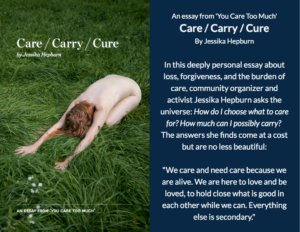by Lucy Thornton, Perfect Balance Marketing
I once had a friend who was addicted to blogging – most evenings she’d sign into her Blogger account, check for new comments (normally none) then visited other blogs and added nice comments.
After three months of this (during which she gained 43 followers) she lost interest in blogging, and her site joined the millions of inactive blogs.
I guess you realise this friend is actually me. I’m not ashamed to admit that my first blog was self-indulgent – more of a journal than a blog, waffling on about the weather, my journey to work and how my car did on its MOT.
I had no direction. No focus. No strategy. That’s fine if your blog is a hobby, but if you’re hoping to grow your readership, get people linking to you and tweeting your posts, then you need to up your game.
There are millions of blogs out there competing for readers. Having great content is one way of getting people to engage, but there are some other ways too.
Try the following and see how your blog stats change:
1. F-reading
Jakob Nielsen publishes some great research showing how people read on the web. Most people won’t read every word of your carefully crafted content (did you read all of that?).
Instead, they read copy online in a rough ‘F’ shape:
– they scan the top of the page (your logo, tagline, navigation menus)
– then the left side of the page to get a gist of the content
– skimming along a couple of paragraphs that grab them, before scrolling to the bottom.
Consider this when you’re putting together your blog. Put the most important information in the header – use keywords that will confirm to readers that your content is relevant, so they don’t click right out again. And make sure you craft a killer headline for each post to keep them reading (more on writing great headlines next time).
2. Break up your post
Bullet points, lists, subheadings and images are effective ways of making your content look less overwhelming. It helps readers skim to find the points most relevant to them.
Keep hyperlinks blue, keep your homepage simple and uncluttered, and break up any lengthy content.
Below are some examples of how not to do it:

Too busy, long paragraphs of unbroken copy, different size columns, different size fonts, more colours than Lady Gaga’s wardrobe, loads of icons and hyperlinks.
And then there’s the other extreme:
INSERT SCREEN GRAB 2
As much as this goes against all my natural instincts, forget most of what you learnt at high school about grammar. That doesn’t mean typos and spelling mistakes – content should to be easy to read and that means check it for typos (then check it again). If you’re writing a novel, then you probably want to make sure your sentence structures are spot-on, but web content should be simple. So keep it informal.
Oh, and if you have to take a breath mid sentence, then it’s probably too long. Which brings us onto…..
4. Keep sentences short
Waffling sentences, even when they have commas to break up the content, can be very off-putting for the average visitor to your website, because they have to read the whole thing from beginning to end to make sense of it, which can be annoying and confusing, and you end up losing people halfway through before you’ve been able to make your point, however good it is.
Point made? Good.
5. Stay focused
One of the mistakes I was guilty of when I first entered the blogging world was posting about anything and everything. Here’s a diary of posts I shared with the world within just one week:
Day 1: what I had for dinner (this would be fine if my blog was about weight loss and I’d included a link to the recipe I’d used, the number of calories, and a review about the meal)
Day 2: what we’d done over the weekend (fine if my blog was about moving to Cornwall or living on the coast)
Day 3: my day at work (not a problem if my blog had been about working mums and juggling all my different roles)
Day 4: my latest sewing project (perfectly suited for a blog about handmade products, like this one!)
As fascinating as each post was (ahem), my posts were too diverse for readers.
Be consistent in the subjects you include on your blog and don’t post about that great new Chinese that’s just opened near you (unless your blog’s about food).
6. Interaction – ask questions
Some of the best posts I’ve written have engaged readers – asked for their input and experiences. The post is improved with the comments and suggestions that are added after it’s published. This approach can also generate ideas for new posts – you can get an insight into what your readers worry about, so you do a follow-up post in which you answer the most common questions.
7. Images
A picture speaks a thousand words. The screen grabs above illustrate many points about poor website design, without needing to list the detail. However, when you use images in your posts and web pages, make them relevant, and give them insightful captions. Captions are another easily scanned element of your website or blog, so make sure they have keywords that relate to the content.
This photo was taken from my office window in Cornwall, England last Monday – I’d struggle to describe that with just words.
Next time we’ll cover how to write great headlines that get your followers reading and looking forward to your next post.
So which of those did I not do in this article? Did I cover them all effectively?
And which ones do you think work best for your blog? Share in the comments below.




